
The history of Madagascar is distinguished clearly by the early isolation of the landmass from the ancient supercontinent of Pangaea, containing amongst others the African continent and the Indian subcontinent, and by the island's late colonization by human settlers from the Sunda islands and from East Africa. These two factors facilitated the evolution and survival of thousands of endemic plant and animal species, some of which have gone extinct or are currently threatened with extinction. Trade in the Indian Ocean at the time of first colonization of Madagascar was dominated by Indonesian ships, probably of Borobudur ship and K'un-lun po types.

Radama I "the Great" was the first Malagasy sovereign to be recognized as King of Madagascar (1810–1828) by a European state, Great Britain. He came to power at the age of 17 following the death of his father, King Andrianampoinimerina.
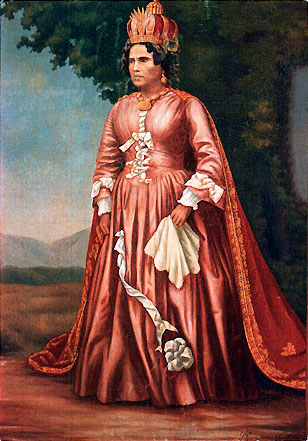
Ranavalona I, also known as Ranavalo-Manjaka I and the "Mad Monarch of Madagascar" was sovereign of the Kingdom of Madagascar from 1828 to 1861. After positioning herself as queen following the death of her young husband, Radama I, Ranavalona pursued a policy of isolationism and self-sufficiency, reducing economic and political ties with European powers, repelling a French attack on the coastal town of Foulpointe, and taking vigorous measures to eradicate the small but growing Malagasy Christian movement initiated under Radama I by members of the London Missionary Society.

Radama II was the son and heir of Queen Ranavalona I and ruled from 1861 to 1863 over the Kingdom of Madagascar, which controlled virtually the entire island. Radama's rule, although brief, was a pivotal period in the history of the Kingdom of Madagascar. Under the unyielding and often harsh 33-year rule of his mother, Queen Ranavalona I, Madagascar had successfully preserved its cultural and political independence from European colonial designs. Rejecting the queen's policy of isolationism and persecution of Christians, Radama II permitted religious freedom and re-opened Madagascar to European influence. Under the terms of the Lambert Charter, which Radama secretly contracted in 1855 with French entrepreneur Joseph-François Lambert while Ranavalona still ruled, the French were awarded exclusive rights to the exploitation of large tracts of valuable land and other lucrative resources and projects. This agreement, which was later revoked by Prime Minister Rainilaiarivony, was key to establishing France's claim over Madagascar as a protectorate and, in 1896, as a colony.
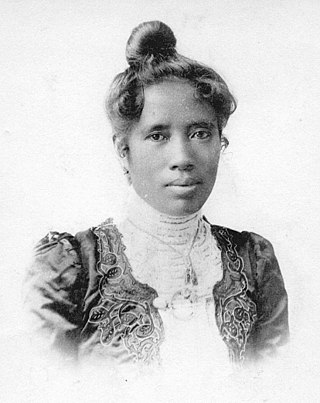
Ranavalona III was the last sovereign of the Kingdom of Madagascar. She ruled from 30 July 1883 to 28 February 1897 in a reign marked by ultimately futile efforts to resist the colonial designs of the government of France. As a young woman, she was selected from among several Andriana qualified to succeed Queen Ranavalona II upon her death. Like both preceding queens, Ranavalona entered a political marriage with a member of the Hova elite named Rainilaiarivony, who largely oversaw the day-to-day governance of the kingdom and managed its foreign affairs in his role as prime minister. Ranavalona tried to stave off colonization by strengthening trade and diplomatic relations with foreign powers throughout her reign, but French attacks on coastal port towns and an assault on the capital city of Antananarivo led to the capture of the royal palace in 1895, ending the sovereignty and political autonomy of the centuries-old kingdom.
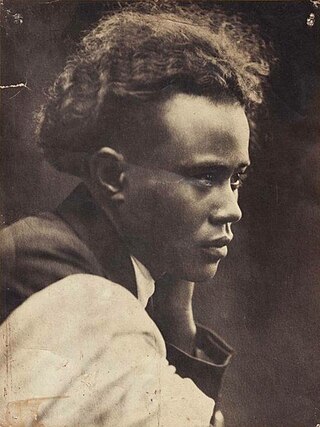
Jean-Joseph Rabearivelo, born Joseph-Casimir Rabearivelo, was a Malagasy poet who is widely considered to be Africa's first modern poet and the greatest literary artist of Madagascar. Part of the first Malagasy generation raised under French colonization, Rabearivelo grew up impoverished and failed to complete secondary education. His passion for French literature and traditional Malagasy oral poetry (hainteny) prompted him to read extensively and educate himself on a variety of subjects, including the French language and its poetic and prose traditions. He published his first poems as an adolescent in local literary reviews, soon obtaining employment at a publishing house where he worked as a proofreader and editor of its literary journals. He published numerous poetry anthologies in French and Malagasy as well as literary critiques, an opera, and two novels.

Ambohimanga is a hill and traditional fortified royal settlement (rova) in Madagascar, located approximately 24 kilometers (15 mi) northeast of the capital city of Antananarivo. It is situated in the commune of Ambohimanga Rova.

Jean-Luc Raharimanana is a Malagasy novelist, essayist, poet, and playwright.
Articles related to Madagascar include:

Rainilaiarivony was a Malagasy politician who served as the prime minister of Madagascar from 1864 to 1895, succeeding his older brother Rainivoninahitriniony, who had held the post for thirteen years. His career mirrored that of his father Rainiharo, a renowned military man who became prime minister during the reign of Queen Ranavalona I.

The Franco-Hova Wars, also known as the Franco-Malagasy Wars, were two French military interventions in Madagascar between 1883 and 1896 that overthrew the ruling monarchy of the Merina Kingdom, and resulted in Madagascar becoming a French colony. The term "Hova" referred to a social class within the Merina class structure.

The Rova of Antananarivo is a royal palace complex (rova) in Madagascar that served as the home of the sovereigns of the Kingdom of Imerina in the 17th and 18th centuries, as well as of the rulers of the Kingdom of Madagascar in the 19th century. Its counterpart is the nearby fortified village of Ambohimanga, which served as the spiritual seat of the kingdom in contrast to the political significance of the Rova in the capital. Located in the central highland city of Antananarivo, the Rova occupies the highest point on Analamanga, formerly the highest of Antananarivo's many hills. Merina king Andrianjaka, who ruled Imerina from around 1610 until 1630, is believed to have captured Analamanga from a Vazimba king around 1610 or 1625 and erected the site's first fortified royal structure. Successive Merina kings continued to rule from the site until the fall of the monarchy in 1896, frequently restoring, modifying or adding royal structures within the compound to suit their needs.

The KingdomofMerina, or Kingdom of Madagascar, officially the Kingdom of Imerina, was a pre-colonial state off the coast of Southeast Africa that, by the 18th century, dominated most of what is now Madagascar. It spread outward from Imerina, the Central Highlands region primarily inhabited by the Merina ethnic group with a spiritual capital at Ambohimanga and a political capital 24 km (15 mi) west at Antananarivo, currently the seat of government for the modern state of Madagascar. The Merina kings and queens who ruled over greater Madagascar in the 19th century were the descendants of a long line of hereditary Merina royalty originating with Andriamanelo, who is traditionally credited with founding Imerina in 1540.
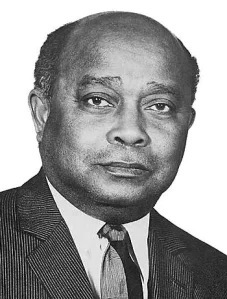
Jacques Rabemananjara was a Malagasy politician, playwright and poet. He served as a government minister, rising to Vice President of Madagascar. Rabemananjara was said to be the most prolific writer of his negritude generation after Senghor, and he had the first négritude poetry published.
The Menalamba rebellion was an uprising in Madagascar by the Sakalava people that emerged in central Madagascar in response to the French capture of the royal palace in the capital city of Antananarivo in September 1895. it spread rapidly in 1896, threatening the capital, but French forces were successful in securing the surrender of many rebel groups in 1897. Elements of the rebellion continued sporadically until 1903.

The Colony of Madagascar and Dependencies was a French colony off the coast of Southeast Africa between 1897 and 1958 in what is now Madagascar. The colony was formerly a protectorate of France known as Malagasy Protectorate. The protectorate became a colony, following Queen Ranavalona III's exile to Réunion.
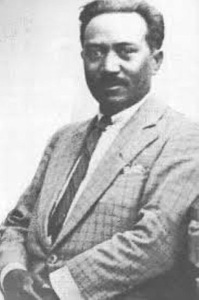
Ny Avana Ramanantoanina (1891–1940) was a Malagasy poet and playwright. He is among the most celebrated literary artists of Madagascar, principally renowned for his poetry, but also his stories and plays. He wrote during the colonial period and is considered to have been the first Malagasy writer to weave political messages into his work. He wrote primarily in the Malagasy language. A contemporary of Jean-Joseph Rabearivelo, who is commonly cited as the first African poet to write according to Western conventions, Ramanantoanina was highly critical of the French colonial authority. He was a member of the secret nationalist organization Vy Vato Sakelika, and was exiled to Mayotte in the Comoros when the organization was banned by the French colonial authority in 1917. His writings were consequently banned and were not reprinted until the 1980s in Madagascar. As a result, his writings are relatively less well known in international literary circles than those of Rabearivelo.
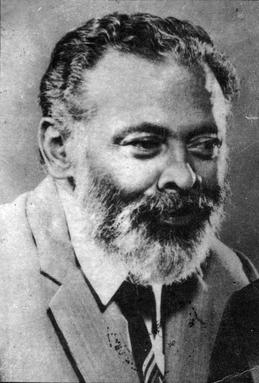
Jean Verdi Salomon Razakandraina (1913–1978), commonly known as Dox, was a Malagasy writer and poet considered one of the most important literary figures in the country's history. He is principally renowned for his poetry and plays, but was also a painter, wrote and performed musical compositions, and translated several major French and English language works into Malagasy. His works have formed part of the language arts curriculum in Madagascar at every grade level since the country regained independence in 1960.

Esther Razanadrasoa, pen name Anja-Z, (1892–1931) was a Malagasy poet and novelist who wrote in the Malagasy language. She was also the editor in chief of the literary journal Tsara Hafatra.
L'Aube rouge may refer to:

















